|
|
We have provided a paragraph or
two as a sample text from certain sections. Click on the
underlined topics to view.
|
|
|
Introduction |
|
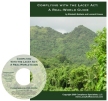
|
*Dealing with the First Moment of Panic |
| *So What’s the Big Deal About the Lacey Act? |
| *So What is The “Real World” Bottom Line for Lacey? |
| *Note to Foreign Suppliers |
| *What the Guide Cannot Do for You |
| *And If You Do Need More
Help |
|
|
| The Guide to the Guide |
| *Detailing the
Contents |
| *Mandatory Disclaimer |
| *Assumptions for Your
Use of This Guide |
|
|
| Section One: |
Frequently Asked Questions (FAQ’s) …and answers! |
|
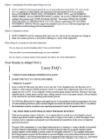
|
*Be Personable With
Your FAQ’s |
*Your Ready-to-Adapt
FAQ’s
(also
available on the CD for you to edit for your own use) |
| |
|
|
| Section Two: |
The Specifics of the Lacey Act
Language |
|

|
*The Prohibited Acts Language |
| *The Language of Entry |
| *Penalties for Violating the Act |
| *Enforcement of the Act |
| *Federal “Due Care” Guidelines |
| *A Final Note from the Congressman Himself |
|
|
| Section Three: |
Organizing Your Species Data |
|

|
*First We Get Organized |
| *More Survival Tricks |
*Ok, So I Made the Database, How Do I Fill It In?
(sample
database available on the CD) |
| *Double-checking Your Supplier’s Information |
|
|
| Section Four: |
Making a Lacey Entry (Revised
Spring 2010) |
|

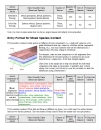
|
*Entry Format for Single Species Content |
| *Entry Format for Mixed Species Content |
| *Entry Format for a Single Product with Mixed Species Content |
| *Entry for Inlays |
| *Entry for
"Special" Categories |
| *One Entry Form per HTSUS |
| *What Does Not Require a Lacey Declaration? |
| *Check Your Spelling (and a few other Basic Entry Suggestions)! |
| *A Final Note on the Data |
*The Current Submission Form
(available on the CD) |
| *Bonus for Those Paying Attention: Errors in the Example Provided by APHIS |
"Thanks
to the information in your book, I am accurately and correctly completing the required Lacey forms. The
declaration requirement for musical instruments is new and I was contacted by both UPS and FEDEX regarding those initial shipments.
I was pleased to discover that, thanks to the materials you provided, I was actually helping their representatives to better understand the
Act and the forms and the materials required! Couldn't have done that without your help! Thanks for a smooth transition to what could have been a very overwhelming new responsibility."
Chris Kamen, Classic Guitars International |
|
| Section Five: |
Organizing your Legality Data |
|
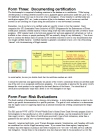
|
*So What Information Should You Collect? |
| *The Three Most Important Factors in Maintaining Legality Data |
| *The Four Suggested Forms of Tracking Incoming Legality information |
| *A Look at a Real-World Database: a Case Study |
*Organizing the Information Sent to You
(sample
database available on the CD) |
| *Keeping your Legality Data Current and Valid |
| *A Final Thought About Legality Documentation |
|
|
| Section Six: |
A General Look at Legality Data |
|
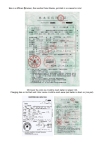
|
*What is Evidence of Compliance? |
| *No Federal Standard |
| *Fact-based Not Document-based |
| *Red Flags |
| *Samples of Legality Documents |
|
|
| Section Seven: |
Working with your Suppliers |
|
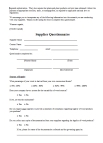
|
*Audit Your Suppliers—the Due Diligence Questionnaire
(also
available on the CD) |
| *Network Your Suppliers with Alternative Suppliers that You Have Prequalified |
| *(If Necessary) Take Responsibility for Supplying the Mill Yourself |
*Put Appropriate Text in Your Purchase Orders
(PO
text in seven major trading languages also available on the CD) |
*Require a “Supplier Lacey Declaration” for Every Shipment
(Samples
also available on the CD) |
|
|
| Section Eight: |
Online Resources
(8 pages of links, also
available on the CD) |
|
|
| Section Nine: |
The Addendum
(a large collection of useful documents and resources, many also
available on the companion CD) |
|
|
|
About the Authors & Acknowledgements |